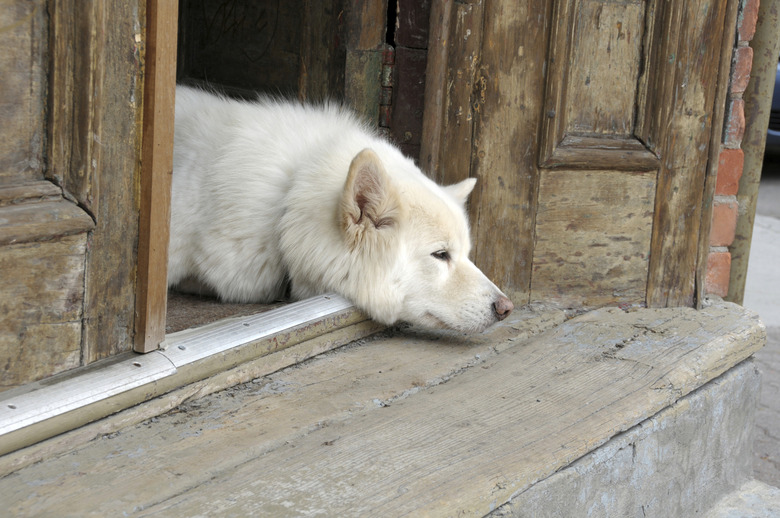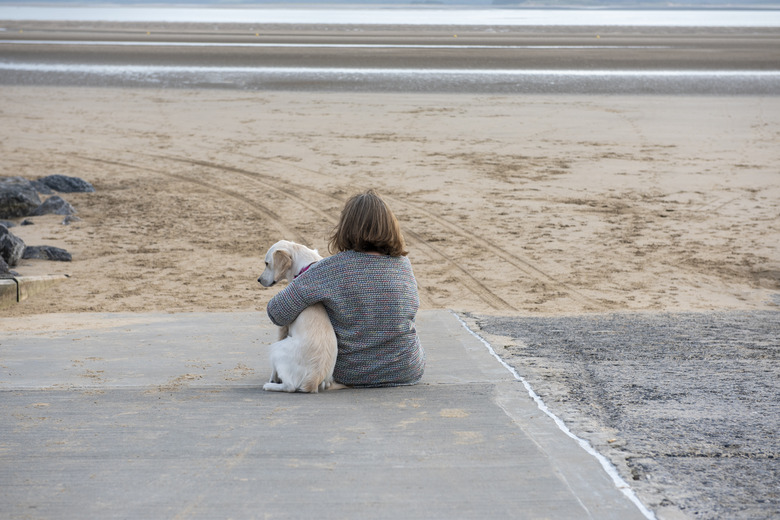Why Do Dogs Run Away When They Are Dying?
Our dogs are members of our families, and for many of us, keeping tabs on where they are and what they're doing is just part of our daily routine. Most dogs stick close to their guardians, looking to them as members of their own interspecies pack. But as a dog enters the later years of life, pet parents may notice some physical and behavioral changes, including spending more time alone or wandering more than usual. To better understand this behavior, you will need to understand the changes your senior dog is experiencing as they prepare to pass on to the next phase of life.
Do dogs run away to die when they are old?
Do dogs run away to die when they are old?
No, contrary to popular belief, dogs do not run away to die when they get older. This is a myth that is often shared, citing the fact that wild dogs would leave the pack to avoid burdening the pack with their weakness.
There are no credible sources documenting this behavior in wild dogs and pack animals or proof that it continues with the domesticated dog. Some experts hypothesize that this is confused with the fact that sick and elderly dogs often fall to the back of the pack when they are moving, leaving them more vulnerable to attacks. This is the result of their old age and its impact on their body, including lack of energy, joint pain, and other physical changes and not due to a conscious choice to stay back.
For pet parents whose dog has wandered off, it's not likely that it was a personal choice. Instead, your dog may have wandered off and was unable to find their way back. As dogs get older, they often experience a decline in their ability to smell, see, and hear, making it more difficult to navigate their surroundings. A sick dog may also be suffering from cognitive dysfunction, leaving them feeling confused about their surroundings.
For this reason, it is important for pet owners to take precautions with both dogs and cats as your pets get older in order to keep them safe.
How do I know when my old dog is dying?
How do I know when my old dog is dying?
How do you know when your dog is reaching their final days? Obviously, age is one factor, as is the presence of an illness, be that chronic or recent. Dogs are often able to sense when that time has come before humans do. Schedule regular examinations and bloodwork with your veterinarian to prioritize your pet's health and monitor for signs of illness. This will increase your chance of catching any health problems early.
Some common signs that your old dog may be dying include:
- Loss of appetite
- No longer drinking water
- Vomiting
- Dull eyes
- Failure to groom properly
- Loss of coordination
- Slowed breathing
- Extreme fatigue
- No longer taking part in things they once enjoyed
- Incontinence
- Confusion or loss of consciousness
- Separation anxiety or wanting to be right by your side more
than usual - Hiding, not wanting to be touched, or avoiding you more
than usual
If you notice any of these signs in your best friend, contact your veterinarian to share your concerns. Since these can all be signs of other illnesses, your veterinarian will be able to do the testing necessary to rule out other causes. They can also provide you with help measuring your dog's quality of life and deciding when it's time to consider humane euthanasia.
End-of-life care for your older dog
End-of-life care for your older dog
There are some things that a dog owner simply cannot change no matter how much we wish we could. If your dog is nearing the end of their life, there are some minor changes that you can make to keep your dog more comfortable in their final days, weeks, or months. While these changes may not seem like much, they can have a significant impact on your dog's quality of life.
- Provide comfort. Provide a warm, and comfortable place
to sleep. - Improve access. Make sure that they have easy access to their food and plenty of
clean, fresh water. If your dog is having difficulty getting around, consider
providing ramps to navigate stairs and rugs to offer better traction, making it
easier for your dog to move safely and reducing the risk of a fall. Make sure
that your dog has easy access to their designated bathroom spots and bring them
out to do their business frequently to avoid accidents indoors. - Hygiene. Keep your dog clean and dry. If your dog is experiencing incontinence, you may wish to use a dog diaper. But if you do, make sure it is changed frequently and your dog stays clean and dry at all times to avoid painful urine scald.
Regularly perform assessments of your dog's quality of life to make sure that they aren't suffering. To do this, use scales or parameters that you and your veterinarian have decided upon. Hospice care is an option for anyone with a dog diagnosed with a terminal illness. This should be discussed with your veterinarian if you wish to choose this route.
How to prevent a dying dog from running away
How to prevent a dying dog from running away
If you notice that your dog is trying to hide, that could be one of the warning signs that they may be experiencing stress, pain, or illness. Try to provide them with safe places where they can hide, allowing them to feel more comfortable. One common solution is to put a cover over your dog's crate to create a den-like feel (but only if your dog is comfortable with this). Respect your dog's desire to be left alone when they go in there to sleep and make sure every family member and member of the household (including children) do the same.
Make sure that your dog is always in a safely contained area, on a leash, or carefully supervised even if you were once comfortable allowing your dog to run loose on your property. This will help to avoid your precious doggy getting lost after wandering off.
The bottom line
The bottom line
While dogs don't run away to die alone, there is a risk that your dog could wander off and find themself unable to find their way back home in their older years. When taking your dog outdoors, make sure that they are always safely contained, on a leash, or closely monitored. Watch for changes in your dog's behavior or physical changes that could indicate they are reaching their last days. Discuss the best interests of your older dog with your DVM and establish parameters to allow you to regularly assess their quality of life. When the time comes, your veterinarian will also be able to talk with you about when humane euthanasia may be the right option.


